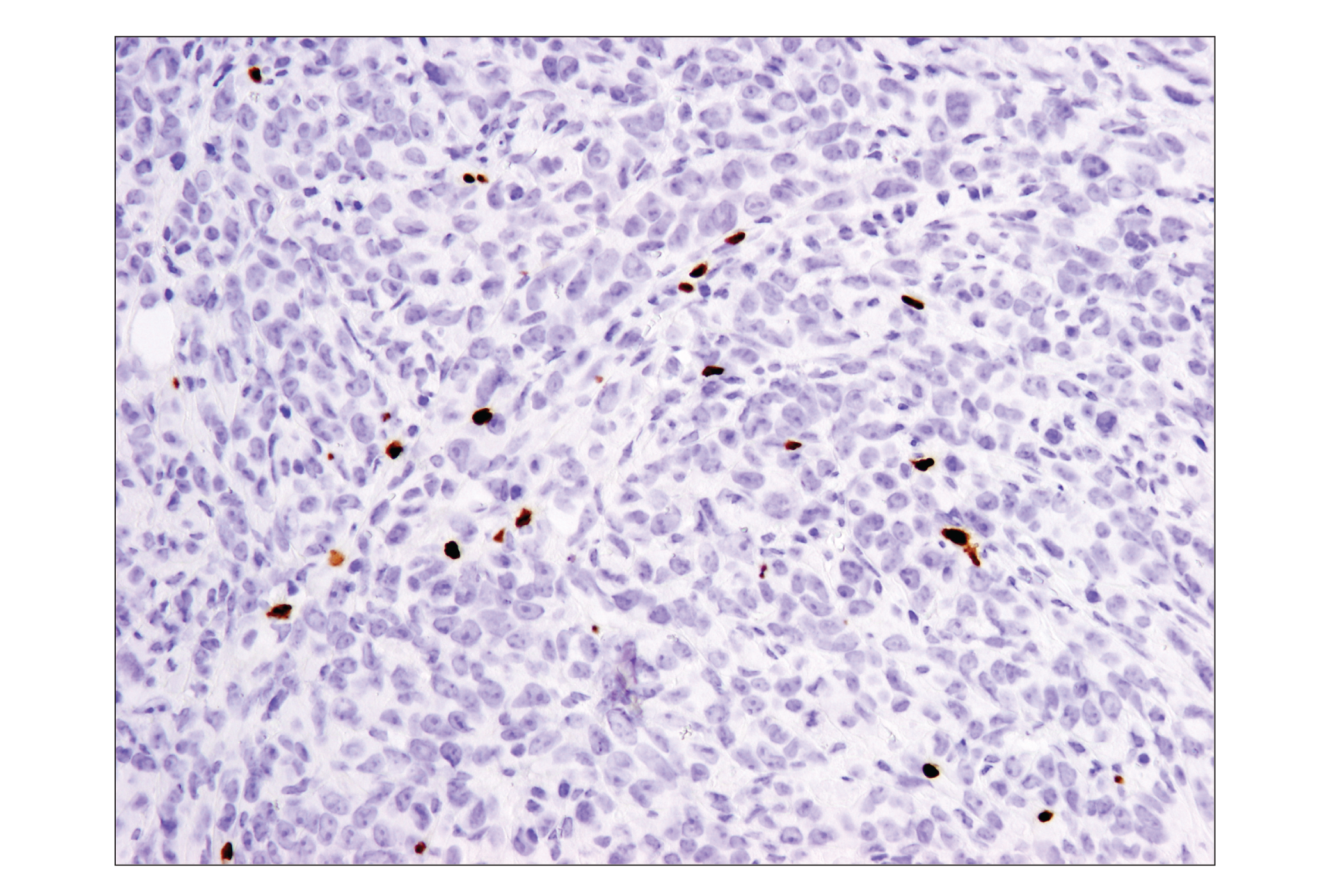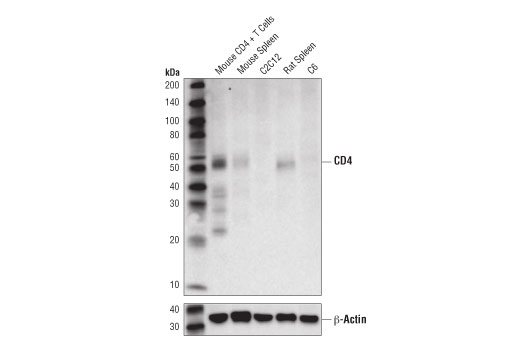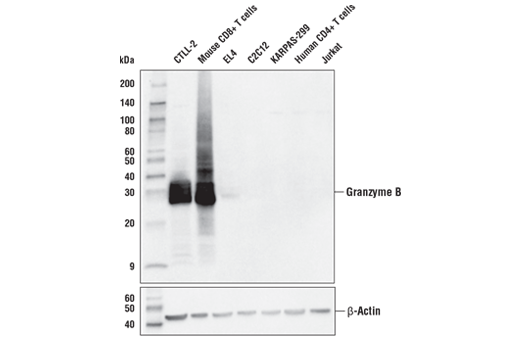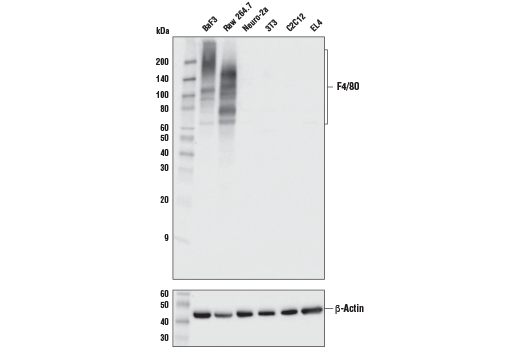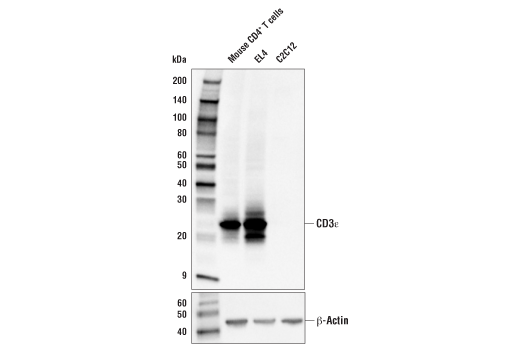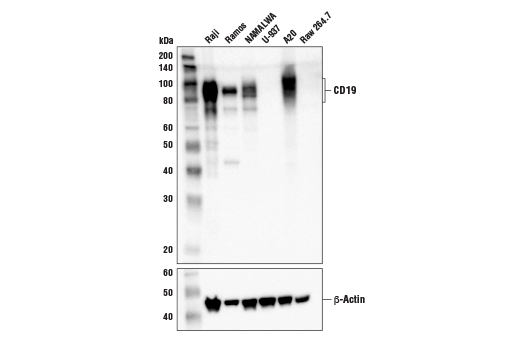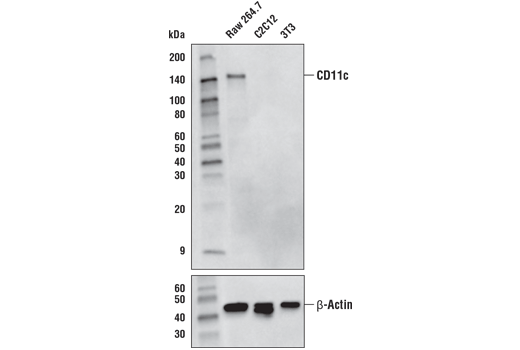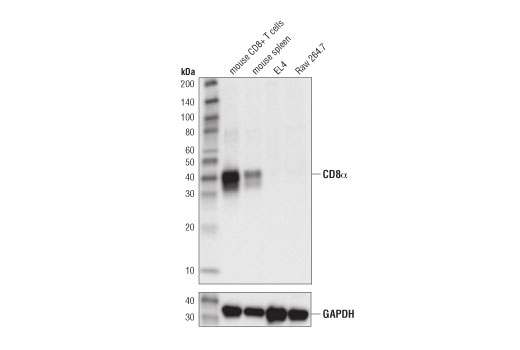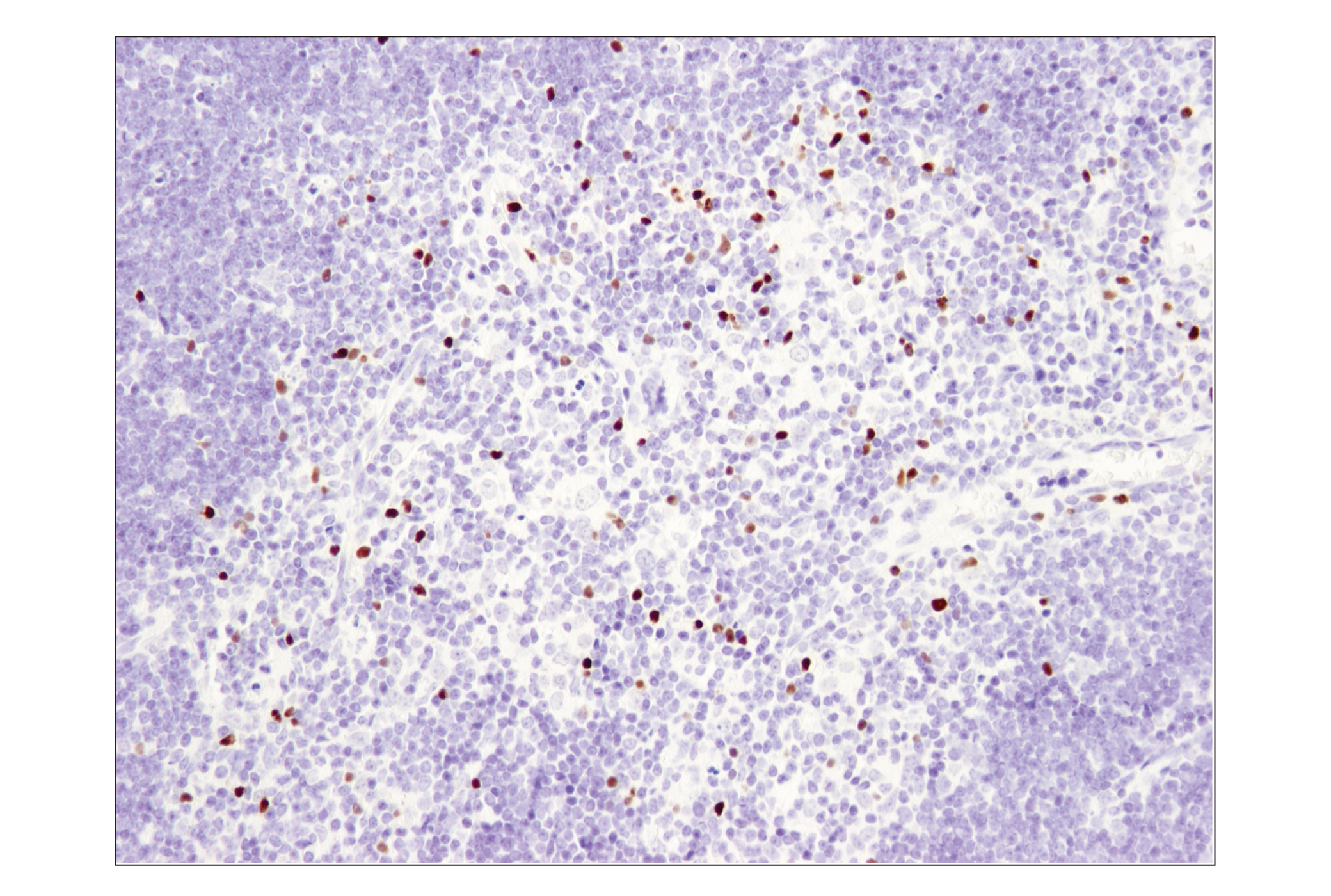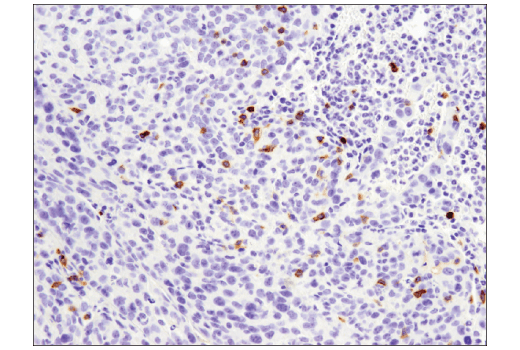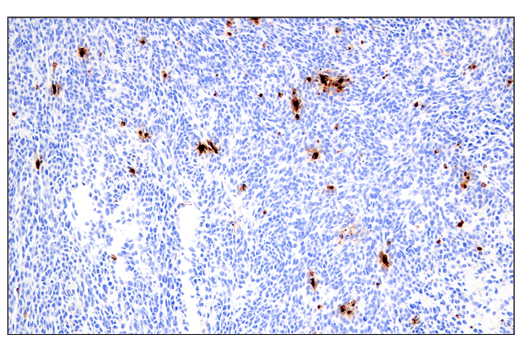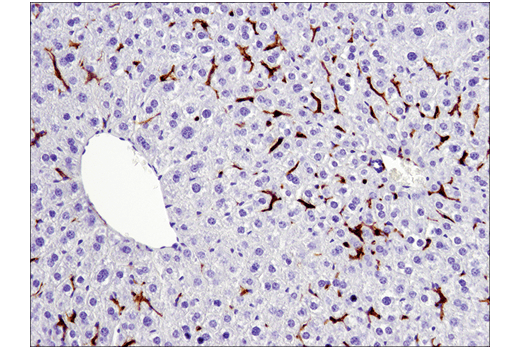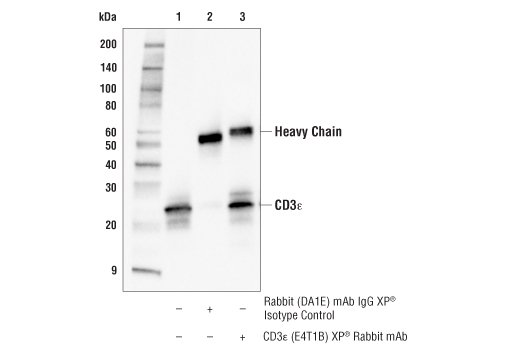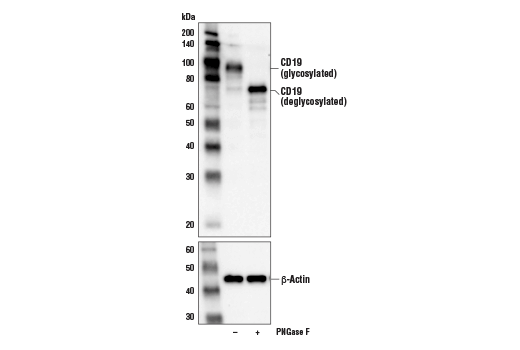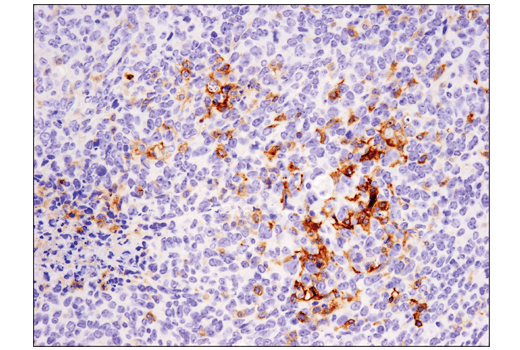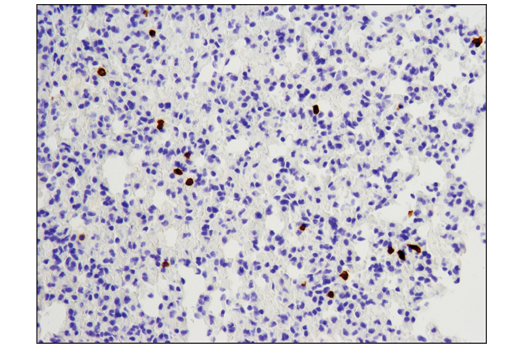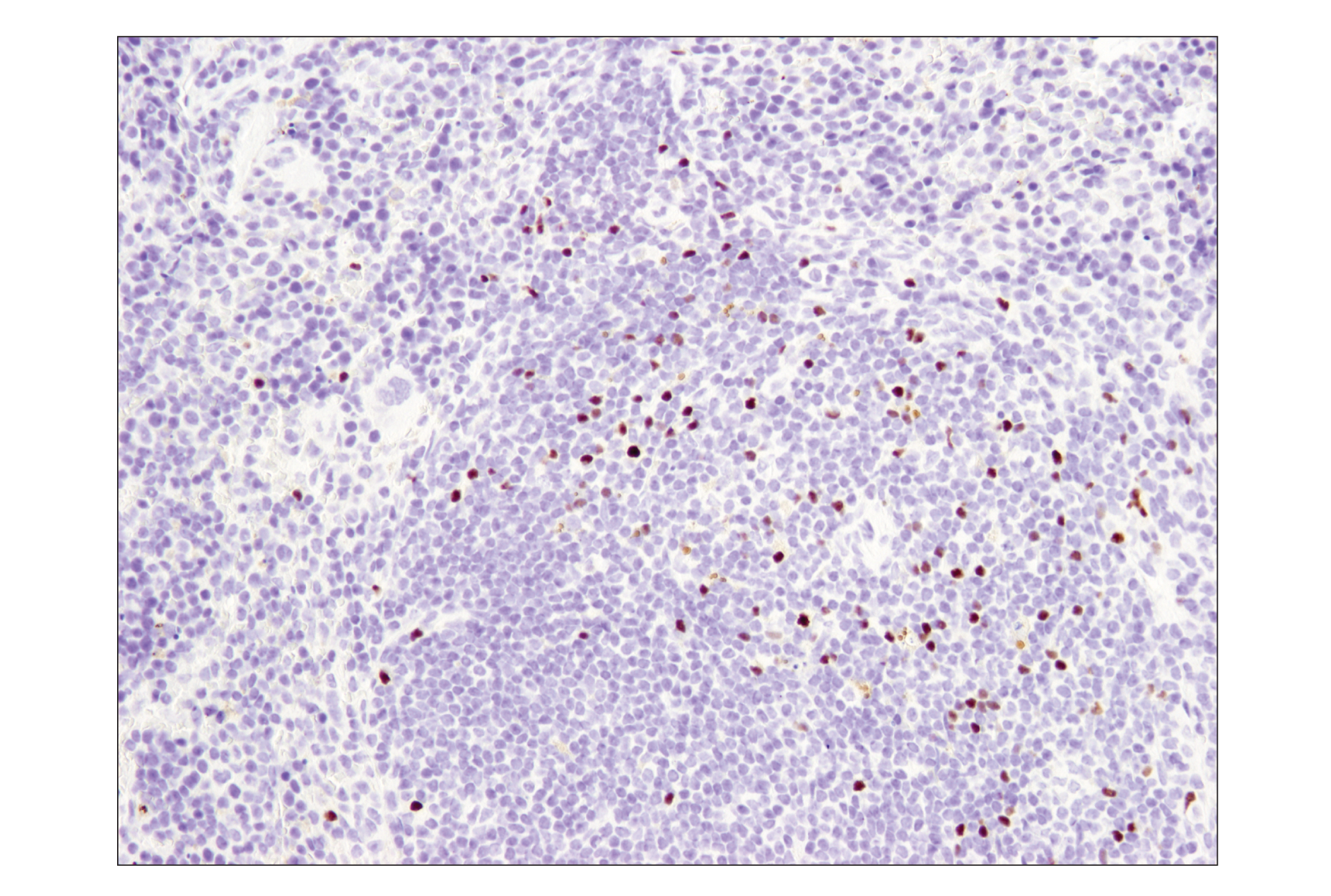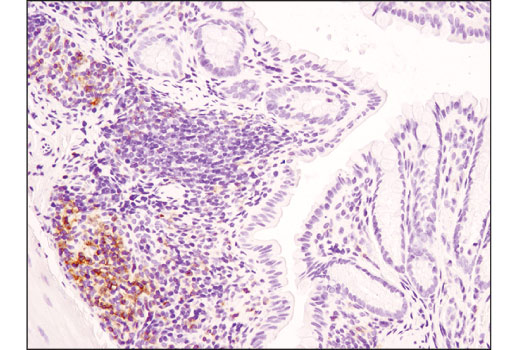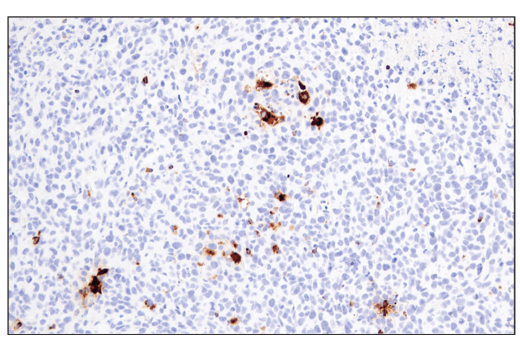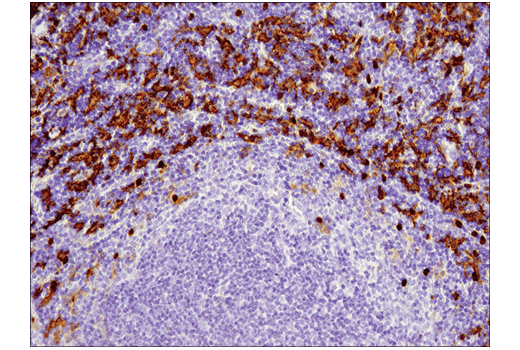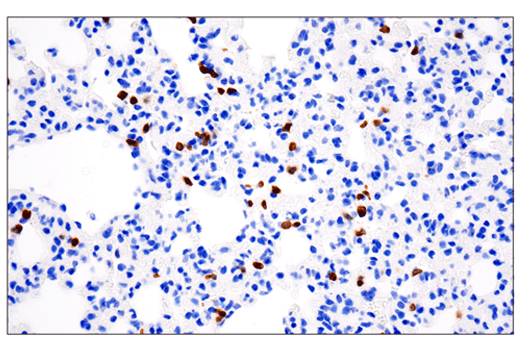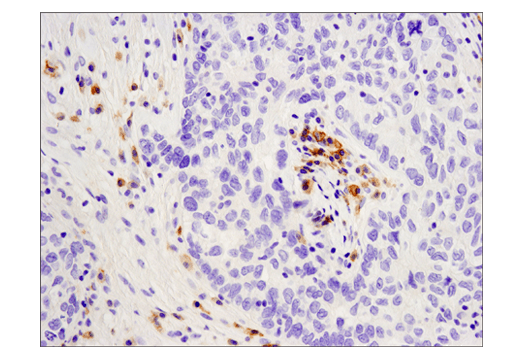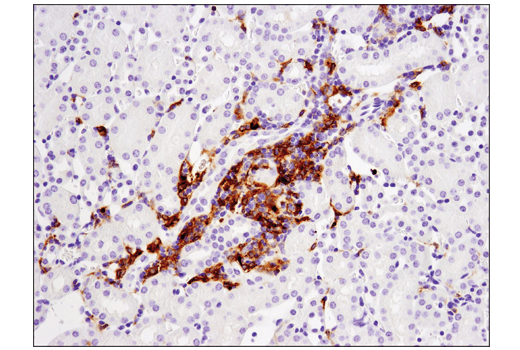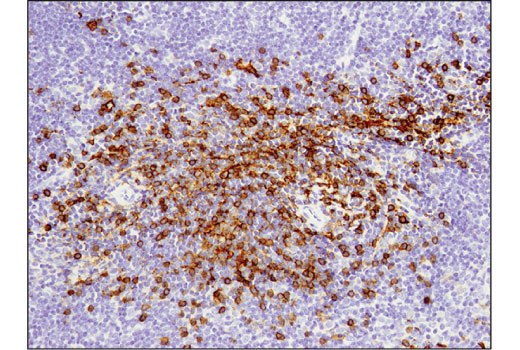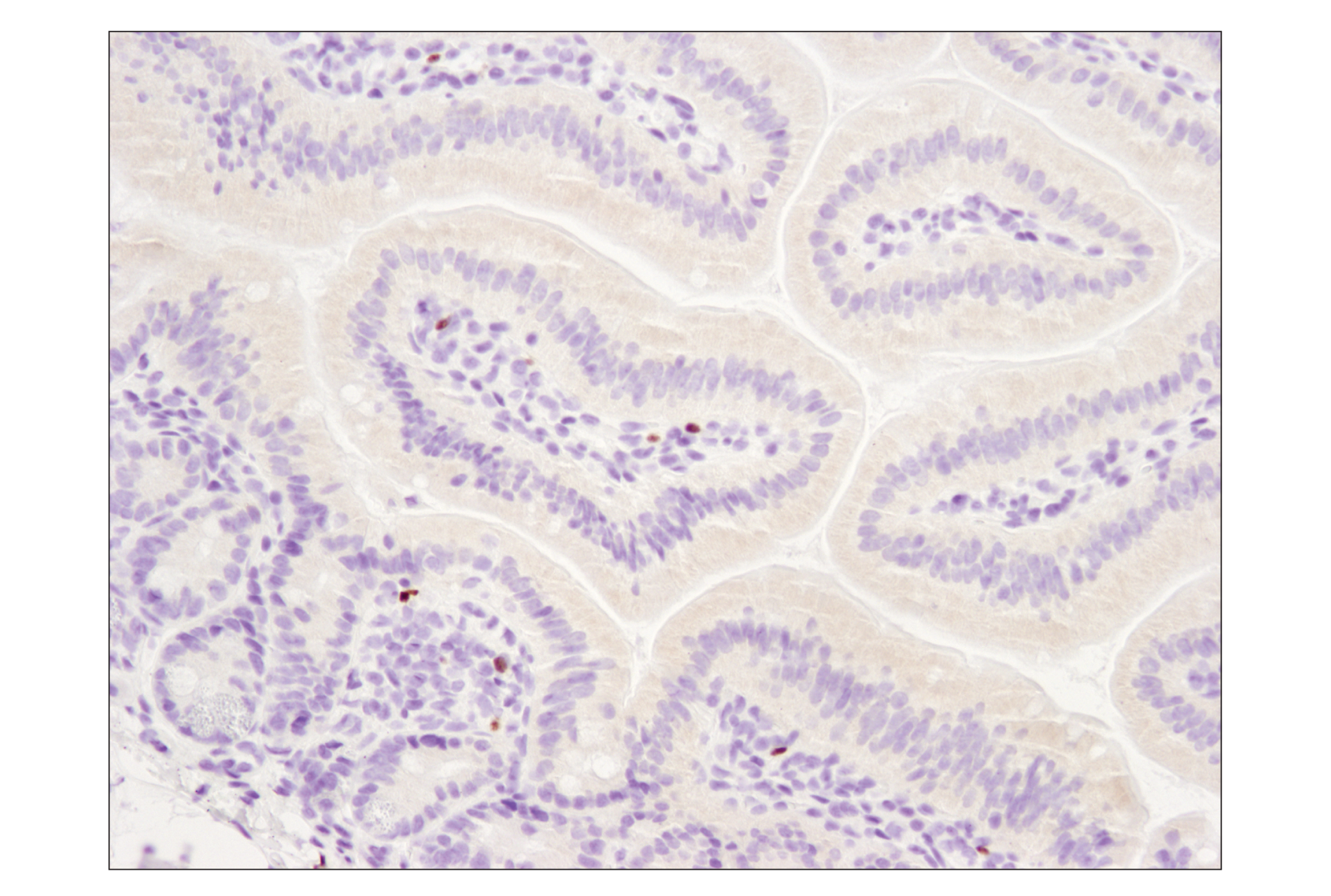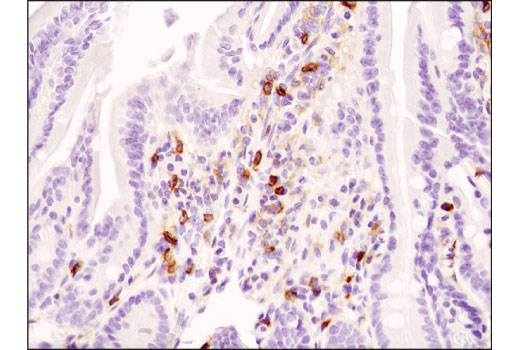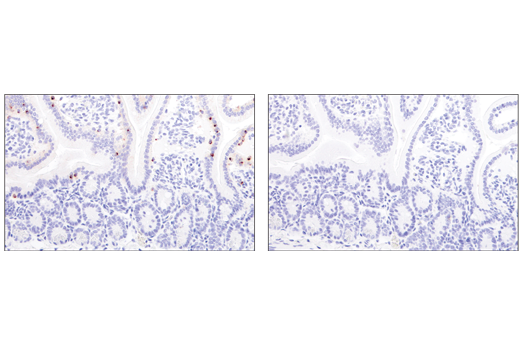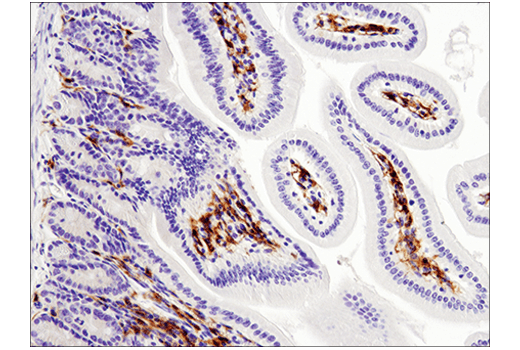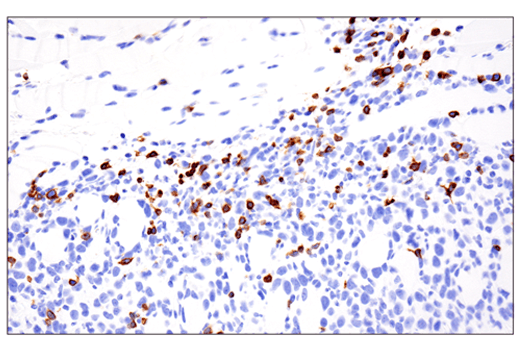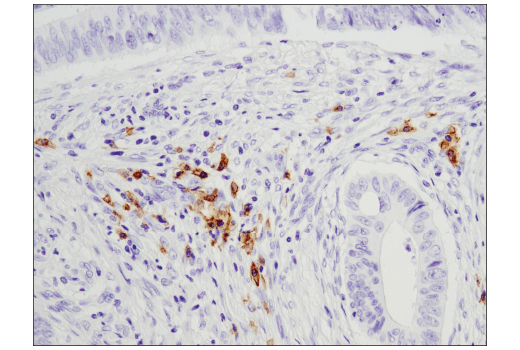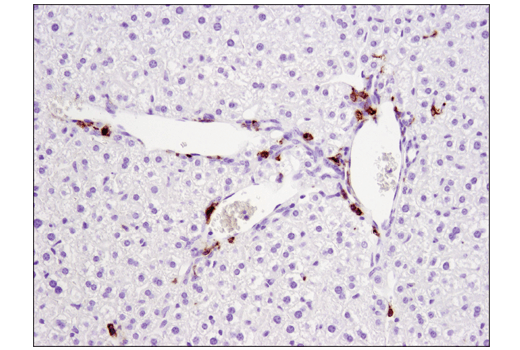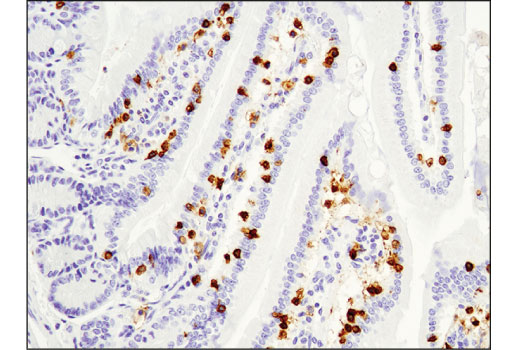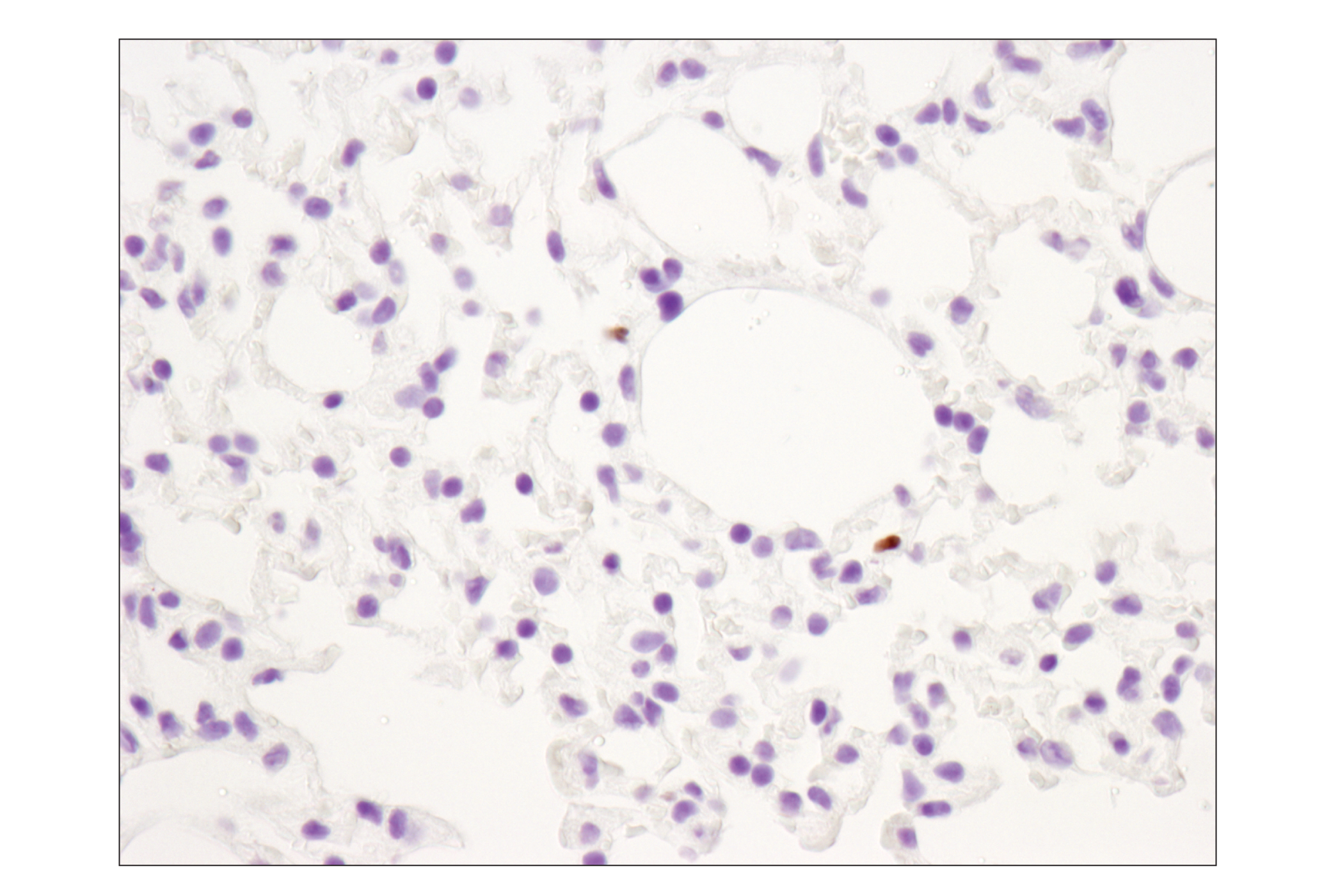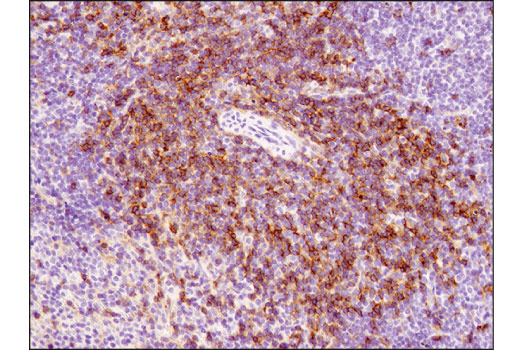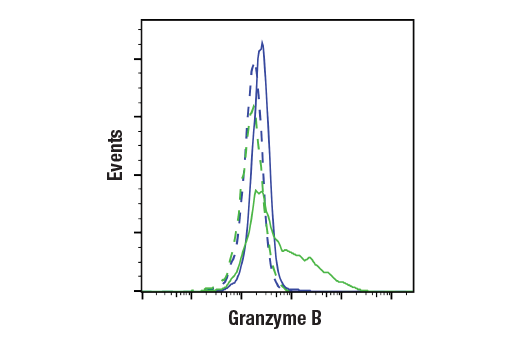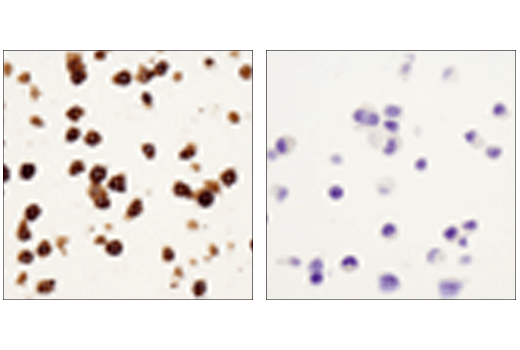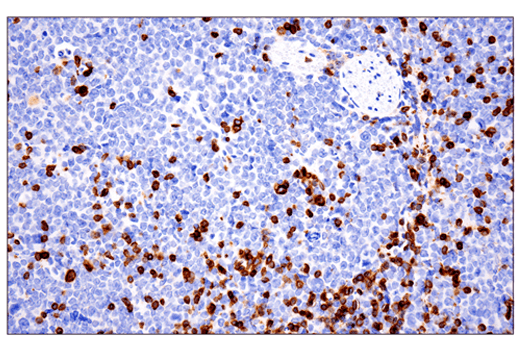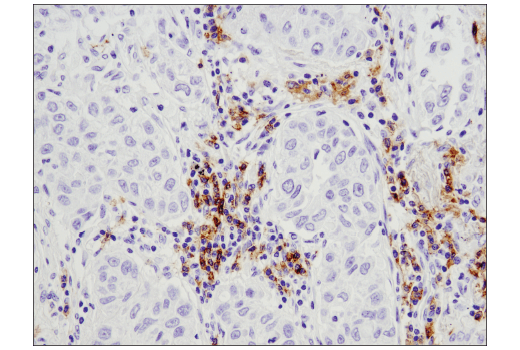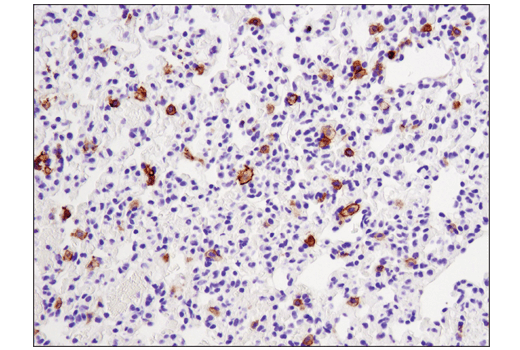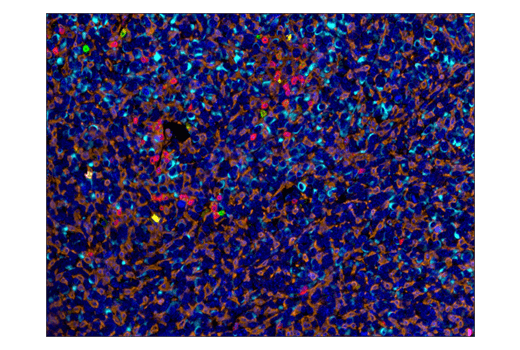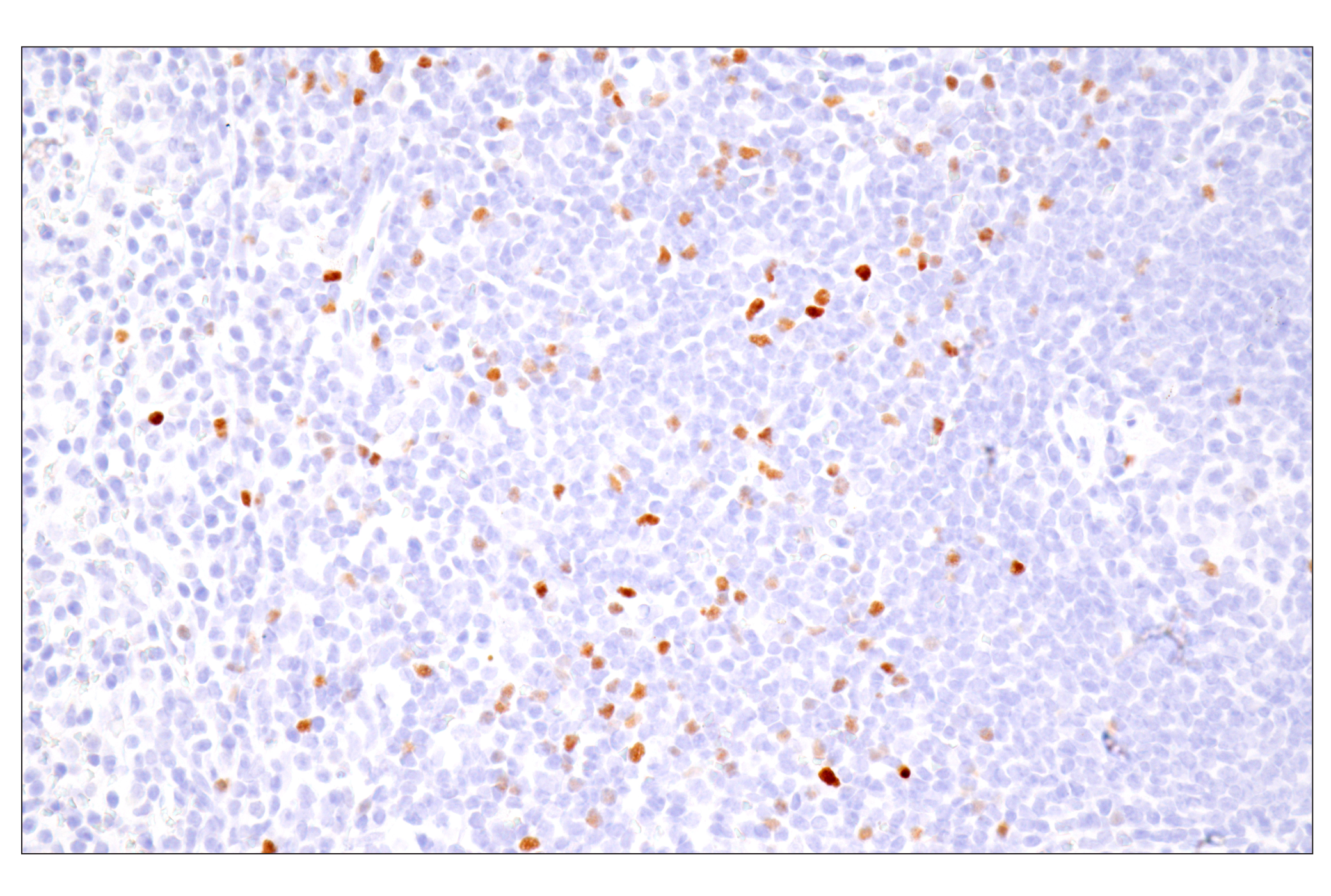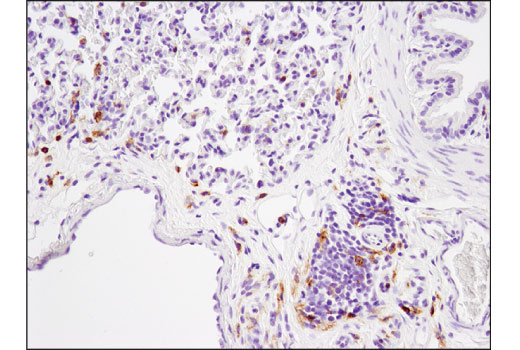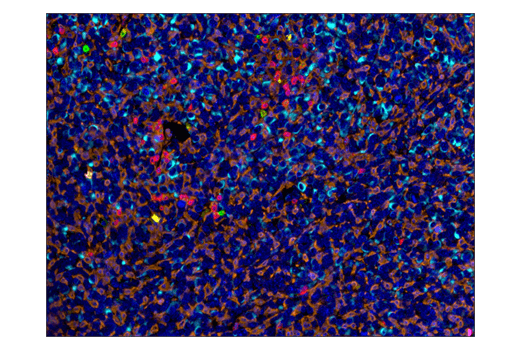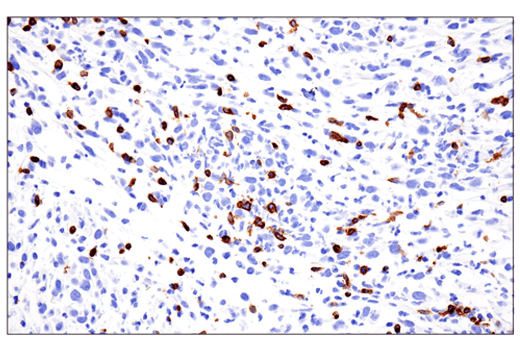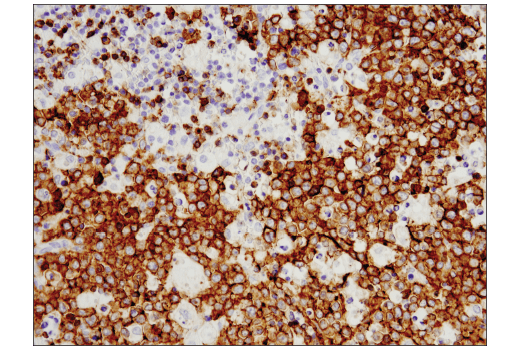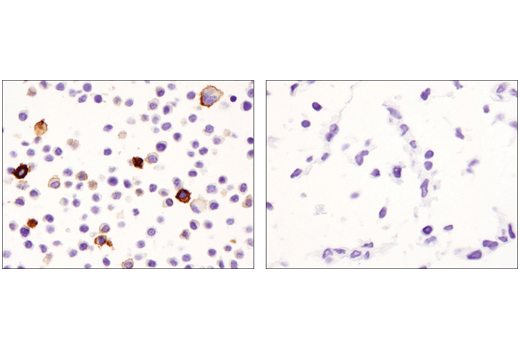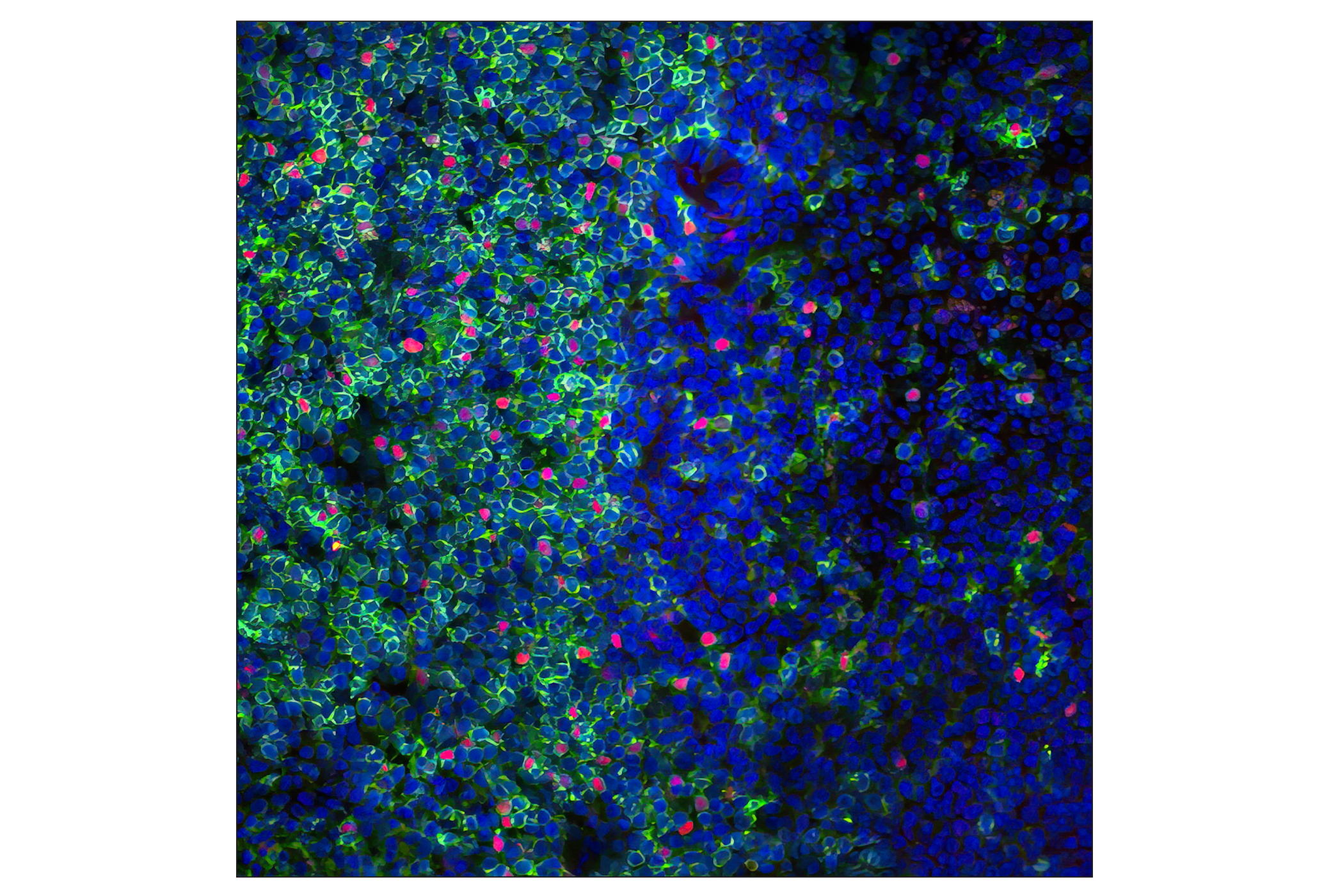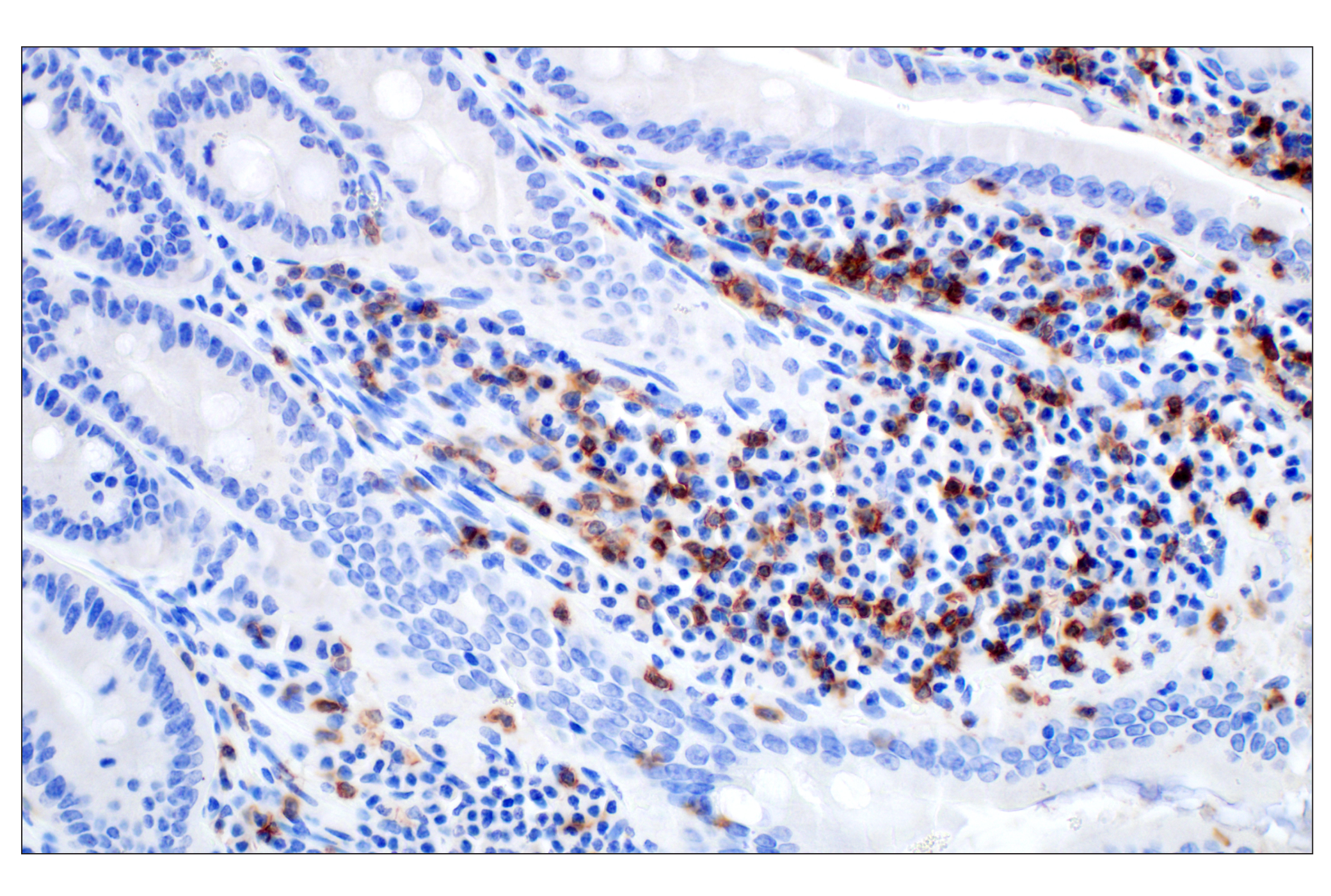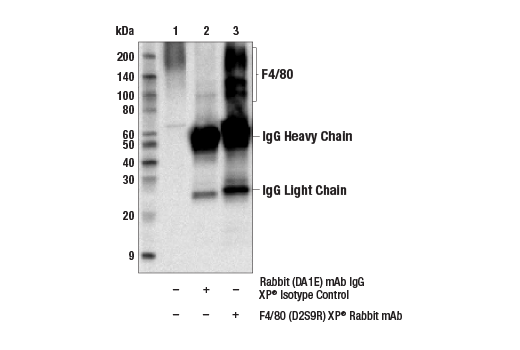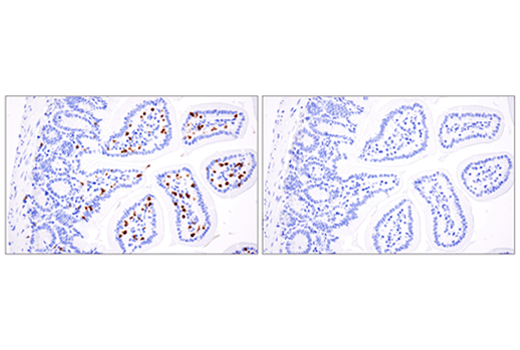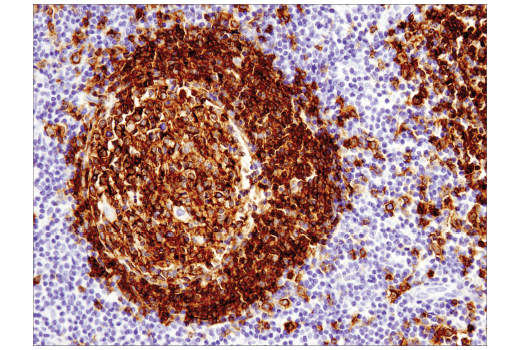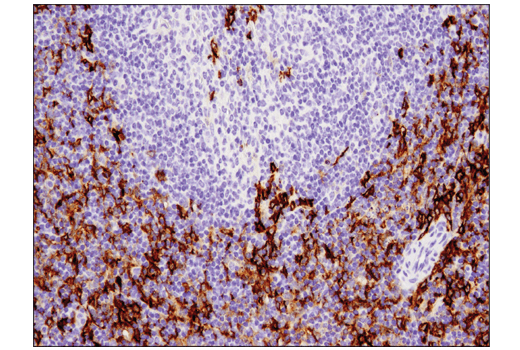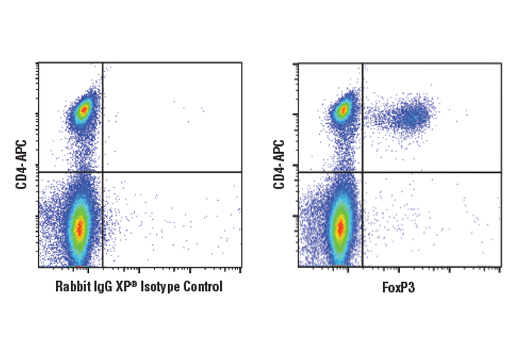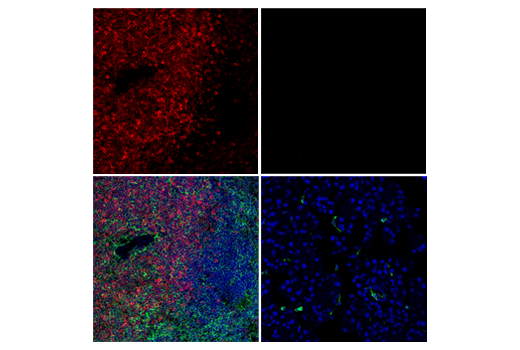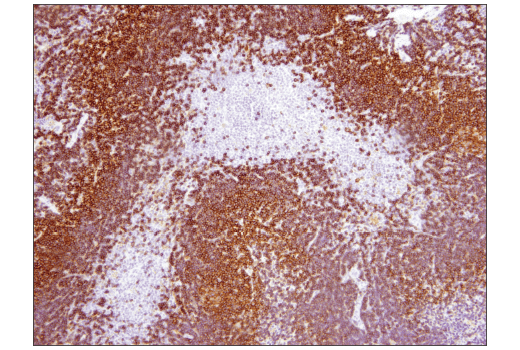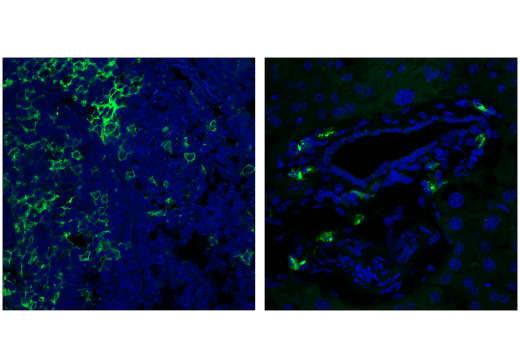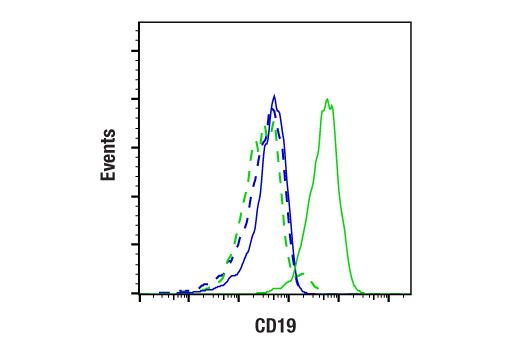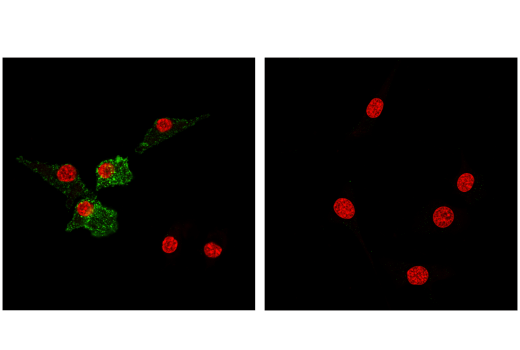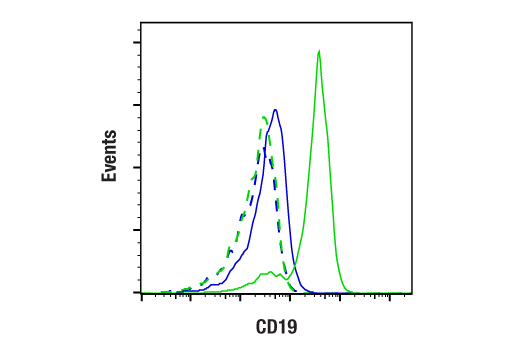| Product Includes | Product # | Quantity | Mol. Wt | Isotype/Source |
|---|---|---|---|---|
| CD4 (D7D2Z) Rabbit mAb | 25229 | 20 µl | 55 kDa | Rabbit IgG |
| CD8α (D4W2Z) XP® Rabbit mAb | 98941 | 20 µl | 35-42 kDa | Rabbit IgG |
| FoxP3 (D6O8R) Rabbit mAb | 12653 | 20 µl | Rabbit IgG | |
| F4/80 (D2S9R) XP® Rabbit mAb | 70076 | 20 µl | 65-250 kDa | Rabbit IgG |
| CD19 (Intracellular Domain) (D4V4B) XP® Rabbit mAb | 90176 | 20 µl | 95 kDa | Rabbit IgG |
| CD11c (D1V9Y) Rabbit mAb | 97585 | 20 µl | 145 kDa | Rabbit IgG |
| Granzyme B (E5V2L) Rabbit mAb | 44153 | 20 µl | 30 kDa | Rabbit IgG |
| CD3ε (E4T1B) XP® Rabbit mAb | 78588 | 20 µl | 23 kDa | Rabbit IgG |
Please visit cellsignal.com for individual component applications, species cross-reactivity, dilutions, protocols, and additional product information.
Description
The Mouse Immune Cell Phenotyping IHC Antibody Sampler Kit provides an economical means of detecting the accumulation of immune cell types in formalin-fixed, paraffin-embedded tissue samples.
Storage
Background
Cluster of Differentiation 3 (CD3) is a multiunit protein complex expressed on the surface of T-cells that directly associates with the T-cell receptor (TCR). CD3 is composed of four polypeptides: ζ, γ, ε and δ. Engagement of TCR complex with antigens presented in Major Histocompatibility Complexes (MHC) induces tyrosine phosphorylation in the immunoreceptor tyrosine-based activation motif (ITAM) of CD3 proteins. CD3 phosphorylation is required for downstream signaling through ZAP-70 and p85 subunit of PI-3 kinase, leading to T cell activation, proliferation, and effector functions (1). Cluster of Differentiation 8 (CD8) is a transmembrane glycoprotein expressed primarily on cytotoxic T cells, but has also been described on a subset of dendritic cells in mice (2,3). On T cells, CD8 is a co-receptor for the TCR, and these two distinct structures are required to recognize antigen bound to MHC Class I (2). Cluster of Differentiation 4 (CD4) is expressed on the surface of T helper cells, regulatory T cells, monocytes, macrophages, and dendritic cells, and plays an important role in the development and activation of T cells. On T cells, CD4 is the co-receptor for the TCR, and these two distinct structures recognize antigen bound to MHC Class II. CD8 and CD4 co-receptors ensure specificity of the TCR–antigen interaction, prolong the contact between the T cell and the antigen presenting cell, and recruit the tyrosine kinase Lck, which is essential for T cell activation (2). Granzyme B is a serine protease expressed by CD8+ cytotoxic T lymphocytes and natural killer (NK) cells and is a key component of the immune response to pathogens and transformed cancer cells (4). Forkhead box P3 (FoxP3) is crucial for the development of T cells with immunosuppressive regulatory properties and is a well-established marker for T regulatory cells (Tregs) (5). CD19 is a co-receptor expressed on B cells that amplifies the signaling cascade initiated by the B cell receptor (BCR) to induce activation. It is a biomarker of B lymphocyte development, lymphoma diagnosis, and can be utilized as a target for leukemia immunotherapies (6,7). F4/80 (EMR1) is a heavily glycosylated G-protein-coupled receptor and is a well-established marker for mouse macrophages (8). CD11c (integrin αX, ITGAX) is a transmembrane glycoprotein highly expressed by dendritic cells, and has also been observed on activated NK cells, subsets of B and T cells, monocytes, granulocytes, and some B cell malignancies including hairy cell leukemia (9,10).
- Kuhns, M.S. et al. (2006) Immunity 24, 133-9.
- Zamoyska, R. (1994) Immunity 1, 243-6.
- Shortman, K. and Heath, W.R. (2010) Immunol Rev 234, 18-31.
- Trapani, J.A. (2001) Genome Biol 2, REVIEWS3014.
- Ochs, H.D. et al. (2007) Immunol Res 38, 112-21.
- Tedder, T.F. et al. (1997) Immunity 6, 107-18.
- Scheuermann, R.H. and Racila, E. (1995) Leuk Lymphoma 18, 385-97.
- McKnight, A.J. et al. (1996) J Biol Chem 271, 486-9.
- Kohrgruber, N. et al. (1999) J Immunol 163, 3250-9.
- Qualai, J. et al. (2016) PLoS One 11, e0154253.
Background References
Trademarks and Patents
使用に関する制限
法的な権限を与えられたCSTの担当者が署名した書面によって別途明示的に合意された場合を除き、 CST、その関連会社または代理店が提供する製品には以下の条件が適用されます。お客様が定める条件でここに定められた条件に含まれるものを超えるもの、 または、ここに定められた条件と異なるものは、法的な権限を与えられたCSTの担当者が別途書面にて受諾した場合を除き、拒絶され、 いかなる効力も効果も有しません。
研究専用 (For Research Use Only) またはこれに類似する表示がされた製品は、 いかなる目的についても FDA または外国もしくは国内のその他の規制機関により承認、認可または許可を受けていません。 お客様は製品を診断もしくは治療目的で使用してはならず、また、製品に表示された内容に違反する方法で使用してはなりません。 CST が販売または使用許諾する製品は、エンドユーザーであるお客様に対し、使途を研究および開発のみに限定して提供されるものです。 診断、予防もしくは治療目的で製品を使用することまたは製品を再販売 (単独であるか他の製品等の一部であるかを問いません) もしくはその他の商業的利用の目的で購入することについては、CST から別途許諾を得る必要があります。 お客様は以下の事項を遵守しなければなりません。(a) CST の製品 (単独であるか他の資材と一緒であるかを問いません) を販売、使用許諾、貸与、寄付もしくはその他の態様で第三者に譲渡したり使用させたりしてはなりません。また、商用の製品を製造するために CST の製品を使用してはなりません。(b) 複製、改変、リバースエンジニアリング、逆コンパイル、 分解または他の方法により製品の構造または技術を解明しようとしてはなりません。また、 CST の製品またはサービスと競合する製品またはサービスを開発する目的で CST の製品を使用してはなりません。(c) CST の製品の商標、商号、ロゴ、特許または著作権に関する通知または表示を除去したり改変したりしてはなりません。(d) CST の製品をCST 製品販売条件(CST’s Product Terms of Sale) および該当する書面のみに従って使用しなければなりません。(e) CST の製品に関連してお客様が使用する第三者の製品またはサービスに関する使用許諾条件、 サービス提供条件またはこれに類する合意事項を遵守しなければなりません。
